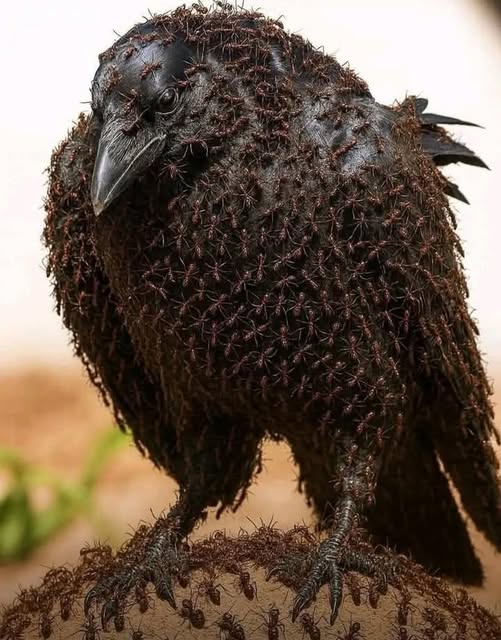It might sound like something from a folk tale, but it’s a real and well-documented behavior. When a crow feels tired, itchy, or unwell, it doesn’t hide away in a tree to rest. Instead, it deliberately seeks out an anthill — not for food, but for treatment.
The crow lands nearby, folds its wings halfway, crouches low, and lets ants swarm over its body. Sometimes, it even picks up individual ants in its beak and rubs them into its feathers. To a casual observer, it may look like the bird is just tolerating an annoyance. In reality, it’s engaging in a form of natural self-medication.
As the ants crawl and bite, they release formic acid — a potent natural compound with antibacterial, antifungal, and insecticidal properties. This acid helps remove feather lice, mites, and other parasites. It can also prevent the growth of harmful bacteria and mold in the plumage, keeping the bird’s feathers in top condition.
Scientists call this behavior anting. It’s been observed not just in crows, but in over 200 bird species worldwide — from robins to starlings to wild turkeys. Some birds prefer “passive anting” (standing still and letting the ants do the work), while others practice “active anting” (grabbing ants and applying them directly to the body).
Why ants? Because they’re free, plentiful, and equipped with built-in chemical weapons. Long before humans discovered antibiotics or insecticides, birds had already learned to harness them — without ever mixing a single potion.
In the quiet exchange between bird and insect, there’s no prescription, no side effects, and no cost — only the slow, patient work of nature healing itself.
Clever. Ancient. A living reminder that the forest has always been a pharmacy.
